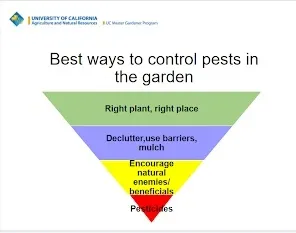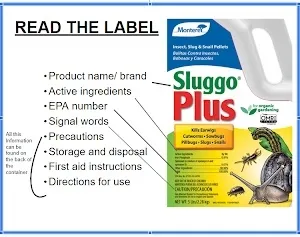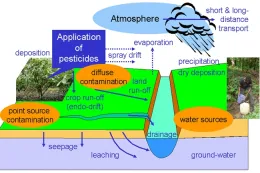Melody Kendall

The best way to control pests in the garden is to put the right plant in the right place, declutter your landscape, create barriers, use mulch and, we talked about this last week, encourage the natural enemy populations in your gardens.
Enter the integrated pest management method of pest control. Integrated pest management (IPM) is a science-based approach to managing pests using more environmentally friendly methods. IPM is a process that you can use to solve pest problems while minimizing risks to people and the environment. It can be used to manage all kinds of pests in urban, agricultural, and wildland or natural areas.

When looking for pest management solutions, prevention is the key. Healthy plants are the best defense against pests. Provide plants with proper fertilization, irrigation, and other practices that support vigorous growth. Healthy plants can tolerate a certain amount of damage from pests and may not need to be treated. If you have a plant that's not doing well, sometimes the best solution can be to remove it and plant it somewhere else. Remember to plant the right plant, in the right place, under the right climate conditions. Before purchasing a plant, be sure to check for any insects and disease they are prone to harbor.
When problems develop, identifying the pest or problem is the first and most important step. Once you have identified your pest or problem, you can proceed to assess management options. Is it caused by an insect pest, a vertebrate pest or maybe a disease or perhaps it is an abiotic problem? All this information is essential to planning your attack. Once you have identified your problem you can research solutions.
The key to identification is observation and this UC IPM link http://ipm.ucanr.edu/PMG/PESTNOTES/index.html can help with this identification process. Following the prompts you can discover your pest and learn about what IPM options to use. These options will be listed from cultural controls, e.g. creating barriers and use of mulch to the least toxic chemical controls. Getting information from other knowledgeable experts like your local UC Master Gardeners is a good strategy as well. Once your pest ID is established you can proceed with the correct control method.
If the purchase of pesticides is the correct method, always make sure to read the label. This UC IPM link covers it all http://ipm.ucanr.edu/PMG/PESTNOTES/pn74126.html . The label will give you all the information you will need to make that final purchase. Be sure the type of plant or site you plan to treat is listed on the label. Do not to use pesticides labeled for use on ornamental plants on plants that will be consumed. Don't use pesticides labeled for outdoor use indoors and remember that pesticides can seriously damage some plants; read the label to be sure any treated plants won't be damaged by its use.
Finally, when making your pesticide choice remember that most will only control certain stages of the development of the pest. Many only kill larvae, not the eggs. Others only kill the adults. Many fungicides are preventative and won't kill existing infections. Equally, some herbicides only kill germinated weeds but not established ones. The list goes on and only supports the instruction to read the label of any pesticide every time to make sure your selection is the best one for the job.

Before purchasing a pesticide learn all you can about the material, how to correctly use it and how to properly dispose of the empty container. Also, don't purchase the large bargain container. Only purchase the amount needed for the current job. Each time rethink any pesticide purchase and consider if a non-chemical option is the better bet.
We hope these last few week's articles on invertebrate pests, the beneficials, the IPM method and pesticides information and uses have helped you become educated, informed and empowered to feel more confident in your garden when it comes to exploring and choosing the best pest management, prevention options and solutions. Go forth and conquer.
Napa Master Gardeners are available to answer garden questions by email: mastergardeners@countyofnapa.org. or phone at 707-253-4143. Volunteers will get back to you after they research answers to your questions.
Visit our website: napamg.ucanr.edu to find answers to all of your horticultural questions.
Photo credits: UC Master Gardeners of Napa County, Wikimedia Commons (3rd image)
Information links:
IPM method:
http://ipm.ucanr.edu/QT/beneficialinsectscard.html
Pesticides
UC Pesticides in the Home and Landscape Information Home Page: http://ipm.ucanr.edu/GENERAL/pesticides_urban.html
Pesticides: Safe and Effective Use in the Home and Landscape:
http://ipm.ucanr.edu/PMG/PESTNOTES/pn74126.html
Active Ingredient Database: http://ipm.ucanr.edu/PMG/menu.pesticides.php
Some Organically Acceptable Pesticides Used in Gardens & Landscapes: http://ipm.ucanr.edu/PDF/MISC/Some_organic_pesticides_MG_handout.pdf
Less Toxic Insecticides http://ipm.ucanr.edu/PDF/QT/qtlesstoxicinsecticides.pdf

